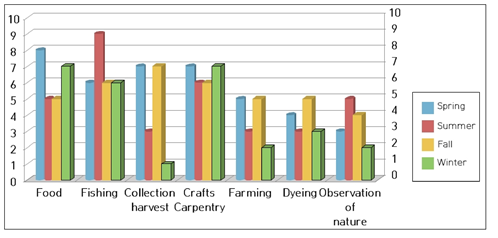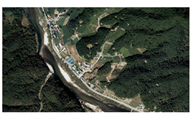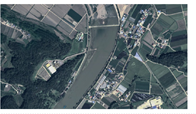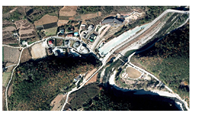농촌체험마을 관광 프로그램의 비교 분석연구:
- 녹색농촌체험마을, 농촌전통테마마을, 색깔있는 마을을 대상으로 -
Comparative Analysis on Tourism Programs of Rural Experience Villages
Article information
Abstract
As government and local governments are working on the various project about rural experience tourism village in these days, manyrural villages are planned and developed, and try to come up to visitor’s demand. Not only quantitative growth by village development but also importance of programs operated by the rural villages are emphasized, therefore it needs to compare and analyze the activity programs about rural experience tourism village in rural community building business by season, characteristics of villages, and overall. Moreover, it has to try to suggest a basic direction of improvement about rural community building business. The site of researches are 15 villages that include 5 green rural tourism villages, 5 rural traditional theme villages, and 5 unique villages that are recent project. The result of research is that similar projects are operated and hard to find characteristic of seasonal programs in existing management business. On the other hand, the programs of recent management business operates not only the former program but also big and activity program using the village’s resources and characteristic.
Ⅰ. 서론
1960년대 한국전쟁으로 인한 국가 가난을 벗어나기 위해 한국 정부는 제 1~2차 경제개발 5개년 계획을 실시하였다. 이에 중화학 공업화 및 수출지항형 산업화 전략을 추진하여 경제성장률은 크게 상승하였지만 도시와 농촌의 소득 격차는 크게 벌어지게 되었다 (Song, 2008; Sung, 2013). 이러한 소득격차로 인해 발생하는 사 회적 문제와 농촌경제 침체를 해소하기 위해 정부는 1970년에 농 촌새마을운동을 본격적으로 추진하였고 1960년대 중반부터 ‘그 린투어리즘(Green tourism)’의 논의도 활발하게 이루어 시작하였 다(Park, 2012). 이러한 농촌은 그 나름의 기능과 역할을 통하여 개 성과 다양성을 추구해 왔다(An, 2007).
농촌새마을운동을 시작으로 2000년대 초부터 각 지방자치단체 는 복지증진 및 살기 좋은 마을을 만들기 위해 다양한 마을 만들기 사업을 실시(Cho, 2013)하게 되면서 마을 만들기 운동은 현재까지 도 전국적으로 활발하게 진행되고 있는 상황이다. 지역사회개발에 있어 주민 만족은 가장 중요한 가치이며 목표일 것이다(An, 2013). 이러한 농촌마을활성화사업은 주민이 직접 참여하여 마을 고유 성 격을 찾아내고 방문객의 요구에 부응하여 농가소득을 증대 시키는 사업이다(Choi, 2005).
현재는 지방자치단체에서 농촌을 위한 지역별 마을 만들기 사업 을 활발히 진행하여 많은 외적 성장이 이루어진 상황으로 이에 상 응하는 다양한 프로그램 활용에 대한 내적 성장 또한 반드시 필요 한 시점이라 본다. 이러한 농촌체험마을의 체험프로그램은 마을개 발 및 운영의 필수 조건으로서 많은 방문객들을 상대로 다양한 경 험과 기대치를 충족시키기 위해 활발히 진행되고 있다.
본 연구는 각 사업별 농촌마을에서 진행되고 있는 체험프로그램 현황을 파악하여 비교 분석함으로써 앞으로 진행될 마을 만들기 사 업에 있어 좀 더 발전적 계획을 위한 기초적 자료를 제공하는 것이 본 연구의 기본적 취지이다. 이에 앞으로 계획될 마을 만들기 사업 에 대한 운영 프로그램 다양화에 관한 연구는 반드시 필요하다고 보며 이 점이 곧 본 연구의 의의라 할 수 있다.
Ⅱ. 연구방법
본 연구는 문헌연구와 현장조사를 병행하여 수행하였으며 마을 만들기 사업에 대한 각종 문헌과 보도 자료를 이용하여 각 마을의 체험프로그램을 조사・분석하였다. 연구수행 중 자료가 미비하거 나 부족한 마을은 현장 조사를 통하여 주민 인터뷰 및 마을 내부의 자료를 활용하였다.
대상지 선정에 있어서는 마을에서 운영 중인 프로그램에 대한 정보의 객관성을 높이기 위하여 기존에 이미 조성되어 운영 중에 있는 사업인 농림축산식품부 주체의 『녹색농촌체험 마을사업』과 농촌진흥청 주체의 『전통테마 마을사업』에 각각 선정된 마을 중에 서 각 기관의 사업이 완전 종료되기 전의 사업을 기준으로 가장 최 근까지 운영되고 있는 마을 5개소씩을 각각 대상지로 선정하였다. 그리고 이미 조성되어 운영 중인 사업과 최근에 운영되고 있는 사 업을 비교 분석하기 위해서 비교 대상으로 농림축산식품부에서 개 최한 “제3회 대한민국 농촌마을 대상”에서 『색깔있는 마을』로 선 정된 마을 중 5개소를 선정하였다.
논문내용의 이해를 돕기 위해 체험프로그램의 명(名)은 다소 다 르나 내용적인 면에 있어 많은 유사성을 가진 프로그램은 하나의 명칭으로 사용하였다. 즉, 각 마을의 프로그램들 중 명칭은 다르지 만 이루어지는 행위나 목적이 많은 유사성을 가진 항목은 묶어서 하나로 통일하였다. 예를 들어 음식을 만들거나 먹어보는 체험은 ‘먹거리 체험’으로, 채집과 수확, 공예와 목공과 같이 비슷한 항목 들은 하나의 대표성을 띄는 명칭으로 통합하였다. 그밖에 묶을 수 없는 특이한 프로그램이나 행위나 목적이 분명한 것은 각각 항목을 그대로 사용하였다.
연구내용으로는 첫째, 대상지에 대한 현황 및 각 마을에서 진행 되고 있는 체험프로그램의 현황을 있는 그대로 종합 정리하였다. 둘째, 내용적으로 유사성이 아주 높은 프로그램은 하나의 이름으로 통일한 후 계절별로 체험프로그램을 비교・분석하였다. 셋째, 각 마 을별로 정체성 있는 프로그램이 운영되고 있는지 여부를 알아보기 위하여 마을의 특성에 따른 운영프로그램과의 연관성을 분석하였 다. 대부분의 마을은 입지조건이나 주 작물에 의한 체험프로그램을 많이 운영하고 있는 것으로 현장조사에서 나타나 각 마을의 특성 요인을 마을의 지정학적 위치, 지명의 유래, 주 작물 등 3가지로 연구자가 분류하였다.
이에 본 연구는 각 사업별 운영 프로그램 특성을 도출하고 앞으 로 진행될 정부 및 지자체의 마을 만들기 사업에 대한 기초적인 발 전방향을 제시하였다.
Ⅲ. 결과 및 고찰
1. 대상지 현황 및 체험프로그램 종합
기존부터 운영되고 있는 사업에 해당하는 10개 마을과 최근에 운영 중인 사업에 해당하는 5개 마을을 포함하여 총 15개 마을의 연 구 대상지의 현황은 강원도에 6개, 충청도에 3개, 전라도와 경기도, 경상도에 각각 2개씩 분포하고 있다.
세부적으로 살펴보면, 기존의 운영 중인 사업인 『녹색농촌체험 마을』은 강원도가 3개 마을, 전남과 경북에 각 1개 마을이 분포하고 있으며, 마을 평균가구 수는 약 51가구, 인구는 108명으로 집계되 었고, 『농촌전통테마 마을』은 경기, 강원, 충남, 전남, 경남에 각 1 개 마을이 분포하고 있으며, 마을 평균가구 수는 약 69가구, 인구는 195명으로 나타났다. 그리고 최근 운영되고 있는 『색깔있는 마을』 은 강원도 2개 마을, 충청도 2개 마을, 경기도 1개 마을이 분포하고 있으며 평균가구 수는 약 37가구, 인구는 177명으로 조사되었다 (Table 1).
연구대상 전체 마을에서 운영되고 있는 체험프로그램을 종합 분 석한 결과 마을별 홈페이지는 모두 개설되어 있고 각 마을별로 체 험프로그램이 중복되는 경우가 많았으며 특히 특산물 판매나 민박 관련 프로그램은 거의 모든 마을에서 운영하고 있었다. 즉 사업별 로 운영되는 마을의 체험프로그램은 마을별 운영프로그램에 대한 명칭의 차이가 있을 뿐 내용적 측면에서는 대부분 대동소이한 프로 그램이 운영되고 있었으며 Table 2는 연구대상지 15개 마을에서 현재 운영되고 있는 체험프로그램을 종합 한 것이다.
2. 계절별 체험프로그램 분석
앞서 마을별 프로그램의 종합 현황을 분석한 결과 각 마을마다 다양한 프로그램을 운영하고 있고 프로그램의 명칭 또한 제각기였 다. Table 3은 명칭을 수정하고 통합한 후 계절별로 체험프로그램 을 분석한 것으로 그 결과 내용적 측면에서 먹거리체험과 물고기잡 기체험, 채집・수확・공예 체험이 계절에 상관없이 많은 마을에서 운 영되고 있었고 심기, 곤충관찰, 갯벌, 눈썰매체험 등은 소수의 마을 에서 가장 적게 운영되고 있는 것으로 조사되었다.
계절별 프로그램이 운영되고 있는 현황은 사계절 중 봄에 가장 많은 프로그램이 운영되고 있었으며 그 다음으로 가을과 여름, 겨울 순이었다. 이는 겨울에 추운 날씨로 인해 활동이 적었던 사람들 이 봄이 되면서 여가 생활을 즐기고 또한 농촌 체험이니 만큼 따뜻 한 봄에 많은 활동이 이루어지고 있음을 예상할 수 있다.
기존 운영 사업과 최근 운영 사업과의 계절별 비교를 살펴보면 먹거리와 물고기 잡기, 채집・수확 체험이 기존 운영 사업에서는 많 이 행해지고 있으나 최근 사업에서는 그 수가 적어 대비적 성격을 보이고 있었으며 공예나 목공체험은 기존과 최근의 양쪽 사업 모두 에서 많이 운영되고 있는 것이 특징이었다. 특히 트레킹, 동굴탐사, 익스트림 스포츠, 수상 및 육상 수송기구 체험, 야영 캠프 등 동적이 고 활발한 체험활동은 기존 운영 사업에서는 전혀 이루어지고 있지 않으나 최근 사업에서는 많은 마을에서 프로그램을 운영하고 있는 것이 두드러진 특징이다.
3. 마을 특성과 체험프로그램의 연관성 분석
입지 측면에서 보면 대상지 15개소 마을 모두 산・농・어촌을 불 문하고 하천이나 호수 또는 계곡을 끼고 마을이 형성되어 있는 것 이 특징이고 대부분 마을은 옛 부터 그 마을에 대한 지명의 유래가 내려오고 있었으며, 최근 행정구역 개편으로 여러 마을이 통합되면 서 새로운 마을의 이름이 생성되었거나 또는 그 마을의 자연 생태 적 요인을 활용하여 마을 이름이 새로이 정해진 곳도 있었다. 주 (主)작물은 대부분 특이한 특징은 없었으나 그 마을의 입지 또는 자 연 환경에 따라 다양한 주작물이 재배되고 있었다.
마을 입지나 지명유래 또는 주작물과 연관성에 의해 그 마을만 의 정체성 있는 체험프로그램이 운영되고 있는 마을은 15개 마을 중 6개 마을에 불과했으며 나머지 9개 마을은 입지나 그 마을의 특 성 유무와 관련 없이 일반화되어있는 프로그램이 운영되고 있었다.
특히 기존 사업과 최근 사업으로 구분하여 마을특성과 프로그램 의 연관성을 분석하면 기존 사업의 10개 마을에서는 3개의 마을이 마을 특성과 관련된 특색 있는 프로그램을 운영하고 있었고 최근 사업은 5개 마을 중 3개 마을이 해당 마을만의 특색 있는 체험 프로 그램을 운영하고 있어 최근에 시행한 사업의 마을에서 마을 특성과 관련 된 특색 있고 정체성 있는 프로그램을 운영하고 있음을 알 수 있었다. 이러한 프로그램은 대부분 그 마을의 입지나 지형・지세와 관련된 프로그램으로 개발・운영되고 있었으며 특히 프로그램의 성격에 있어 기존의 사업은 마을 입지와 관련한 프로그램이 운영되고 있으나 그 성격은 대부분 정적이고 소극적인 반면 최근 사업 마을 에서의 운영프로그램은 규모가 큰 활동적인 프로그램이 주를 이루 고 있는 것이 특징이다. Table 4는 마을의 특성에 따른 체험프로그 램과의 연관성을 분석・정리한 것이다.
4. 소결
농촌전통테마 마을, 녹색농촌체험 마을, 색깔있는 마을 등 15개 소 마을의 체험프로그램을 분석 한 결과 마을투어에서부터 자연관 찰체험까지 대부분의 체험프로그램이 중복 운영되고 있음을 알 수 있었고 특히 물고기잡기, 수확, 먹거리, 공예체험이 가장 많이 중복 운영되고 있는 것으로 조사되었다. 15개 마을의 체험프로그램의 운영 현황에 대한 중복 프로그램의 빈도수를 살펴보면 물고기잡기 체험과 채집・수확체험이 15개의 마을 중 9개의 마을에서 운영되고 있었고 다음으로 먹거리 체험과 공예・목공체험이 각 8개의 마을에 서 중복 운영되고 있어 어느 마을에서나 흔하게 이루어지는 체험프 로그램으로 조사되었다.
이와 반대로 최근 운영 사업인 『색깔있는 마을』로 선정된 5개 마을은 기존 마을에서 운영 중인 프로그램을 운영하면서 추가적으로 계절별로 다른 마을에서 쉽게 볼 수 없는 특색 있는 체험프로그램 을 운영하고 있는 것이 특징이었다.
즉, 기존 운영 사업의 프로그램은 대체적으로 소극적이며 작은 공간에서 진행되거나 농사를 체험하는 등의 정적인 프로그램 위주 로 진행된 반면 최근 사업인 『색깔있는 마을』은 규모가 크고 다이 나믹한 동적 체험프로그램을 추가적으로 운영하고 있었고 기존의 운영 사업과 달리 체험프로그램의 운영에 있어 중복 경향이 적은 것으로 조사되었다. 이러한 프로그램은 마을 지형・지세를 이용한 익스트림스포츠와 수상스포츠, 육상스포츠, 수송기구, 야영, 동굴탐사 등 기존 도시나 일반 농촌에서 쉽게 즐길 수 없는 체험프로그 램을 개발・운영함으로써 마을 방문객이 매년 증가하고 있는 성과 를 보이고 있다. Figure 1은 각 마을에서 중복 운영되고 있는 체험 프로그램을 계절별로 분석하여 그래프로 나타낸 것이다.
종합하면, 최근 운영사업에 해당하는 마을에서 운영되고 있는 프로그램의 특징은 다음과 같다. 첫째, 마을 고유의 전통과 지형・지 세를 활용하여 기존 운영 마을과는 차별화 된 체험프로그램을 구성 하였다. 둘째, 체험프로그램의 활동 범위를 광범위하게 넓혔다. 기 존 체험 프로그램들은 만들기, 먹기, 수확, 채집, 잡기라는 틀 안에 서 프로그램이 구성되어있지만, 『색깔있는 마을』로 선정된 마을의 경우 체험 활동이 이루어지는 범위도 넓어지고 더욱더 활동적인 익 스트림스포츠나 래프팅, 트래킹 등 일반도시에서 쉽게 체험할 수 없는 체험프로그램을 구성하였으며 지역 특유의 지형을 이용한 동 굴탐사, 야영 등을 통해 기존과 차별화 되는 신선한 체험프로그램 을 구성하였다. 셋째, 기존 사업의 일반화화 된 프로그램을 기본으 로 운영하면서 차별화된 프로그램을 추가적으로 구성하였다. 기존 의 사업의 마을들이 일반화된 체험프로그램으로 구성하여 운영하 고 있는 이유는 경제성과 쉽게 구성 할 수 있다는 장점 등의 이유가 있을 것이다. 이에 최근 사업은 기본적 체험프로그램이 구성된 상 태에서 더욱 차별화되고 마을 고유의 특색 있는 체험프로그램을 추 가 구성하였기 때문에 안전성과 차별화를 이루었다고 본다. 넷째, 마을 특유의 입지적 조건이나 마을의 유래, 주 작목 등을 활용하여 그 마을만의 정체성 있는 프로그램을 구성한 점이다.
Ⅳ. 적요
본 연구는 지자체별 농촌마을에 대한 사업이 다양해지는 추세에 역행으로 각 마을에서 운영되고 있는 체험프로그램은 마을 고유의 색깔을 잃어가며 비슷해지는 경향을 보이고 있는 문제점을 인식하 여, 운영 중인 프로그램의 현황을 파악・분석하여 앞으로 진행 될 농 촌마을만들기 사업의 발전방향에 대한 기초적 자료를 제시하고자 하였으며 이에 국내에서 활발하게 진행되고 있는 농촌체험관광마을사업에 있어 각 마을에서 운영되고 있는 체험프로그램을 대상으 로 그 현황을 분석하여 기존의 사업과 최근의 사업의 운영프로그램 의 차이점을 도출 하였다.
분석 결과 기존 운영사업 마을에서는 대부분 비슷한 성격의 프 로그램이 운영되고 있었으며 계절별 프로그램의 특징을 찾기도 어 려운 반면, 최근 운영사업의 마을 프로그램은 해당 마을의 특징적 자원과 지형을 이용한 규모가 크고 활동적인 프로그램이 추가적으 로 운영되고 있는 점을 알 수 있었다.
본 연구를 통해 앞으로 진행 될 농촌체험관광 사업에 있어서는 『색깔있는 마을』의 사례처럼 기본적으로 어느 정도 틀이 잡힌 체험 프로그램은 기본으로 구성하되 각 마을 고유의 문화나 역사 또는 특색 있는 지형을 이용한 그 마을만의 차별화된 체험프로그램을 도 입함으로써 앞으로 마을 만들기 사업에서 좋은 호응을 얻을 수 있 을 것이라고 본다.
본 연구를 수행함에 있어 좀 더 다양한 사업과 많은 마을을 대상 으로 연구를 수행하지 못하고 연구 대상지가 3개 사업의 15개 마을 에 한정됨 점은 본 연구의 한계점으로 아쉬움이 있으며 앞으로 좀 더 다양한 사업과 마을을 대상으로 프로그램을 분석하고 그 프로그 램에 대한 주민과 전문가의 의견을 반영하는 추가적 연구가 필요하 다고 사료된다.
References
An, J.H. 2007. Rural tourism village building with residents' participation. J. Econo. Geogra. Soc. Kor. 10(2):197-210.
An, S.Y. 2013. A study on the factors influencing to resident satisfaction in rural village making. PhD Diss., Kyungnam Univ., Changwon, Korea.
Cho, S.J. 2013. Measures to facilitate village communities through the reillumination of the Saemaeul movement. The Kor. Res. Insti. for Local Administ. Seoul, Korea.
Choi, H.S. 2005. A study on the improvement of rural community design. J. Kor. Insti. Rural Architec. 7(1):39-50.
Park, S.H. 2012. Rural tourism development strategy in Korea. Kor. Rural Econo. Insti., Naju, Korea.
Song, H.S. 2008. A study on the preference type in residentsparticipatory Machizkurii. MS Thesis, Hanyang Univ., Seoul, Korea.
Sung, J. 2013. The first five-year economic development plan (1962-1966) and the ‘Revised plan’ in South Korea. MS Thesis, Konkuk Univ., Seoul, Korea.























